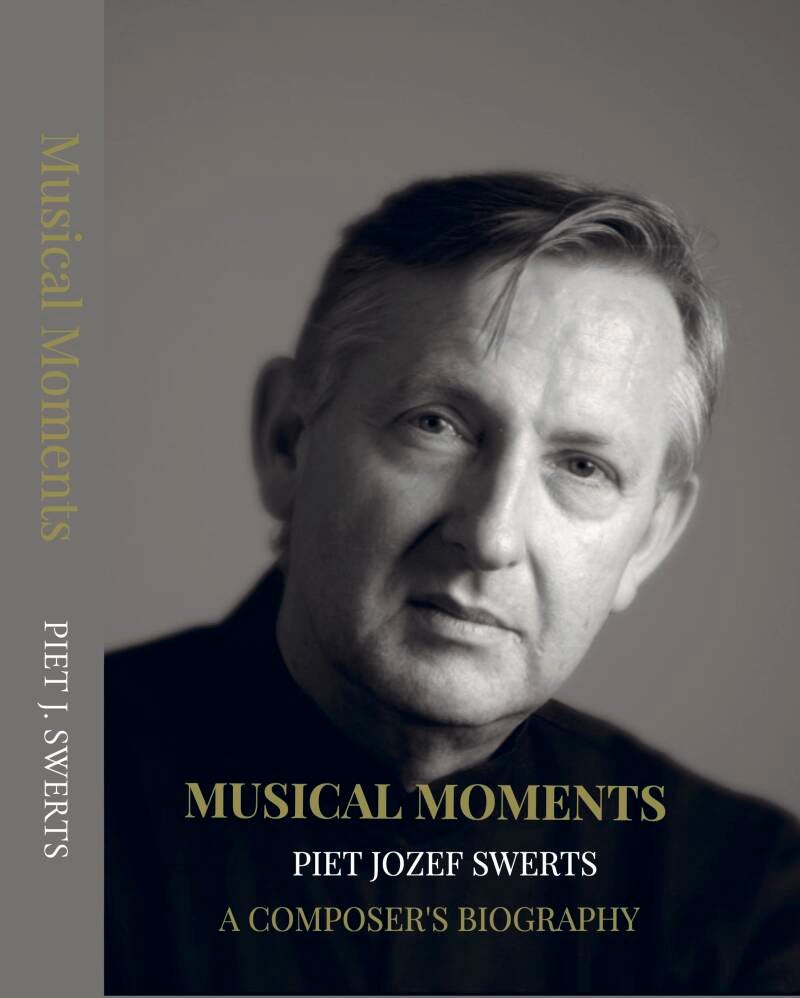
How do you compose? Flemish composer Piet Jozef Swerts try to answer this question by explaining the creative processes of musical projects throughout his professional career. More than 120 QR Codes let the reader listen and watch his music.
Summary
Many people are intrigued how music is written. For them, composing is a fascinating craft. It seems almost an elusive mystery. But this very book offers a special glimpse into the inner kitchen of a professional composer and tries to give nuanced answers to the question that occupies many: ‘How do you do it, composing music?’ ‘Musical Moments’ is a generous retrospective of more than forty years of my career. In this book, I describe that musical journey as precisely as possible. It has become an extraordinary musical quest with sometimes moving and surprising events. It starts with a chronological narrative with relevant descriptions of the creation processes of my compositions. More than 120 QR codes have been incorporated into it and linked to audio and video recordings of the works discussed, so that between the stories you can immerse yourself in this music at your own pace. This way, you not only get a better idea of how music writing works, but above all, you become part of my musical world.

A Preliminary Study On Orchestration
This book is a comprehensive case study that explains step-by-step how to transform simple musical material into instrumental music in all possible combinations. Recommended for professional musicians and avid music lovers. This study is intended for both creative and performing musicians and the passionate music lover. A solid prior knowledge of instruments is warmly recommended, though. The study encourages awareness of instrumental possibilities that can bring more brilliance and virtuosity to an orchestral approach. The starting point of this book is basic: a simple melody is retranslated again and again into new musical entities, instrument-to-instrument combinations. Then "instrumental thinking" is systematically demonstrated: 80 models are derived starting from solo to duo, trio, quartet combinations to ensembles, designed for the woodwinds, brass, harp, percussion,, and strings. All models are also linked to sampled recordings that can be listened to online via QR codes. The accompanying texts clearly and transparently explain the methods that led to these results. Above all, this study is a thorough preparation to the praxis of orchestration.
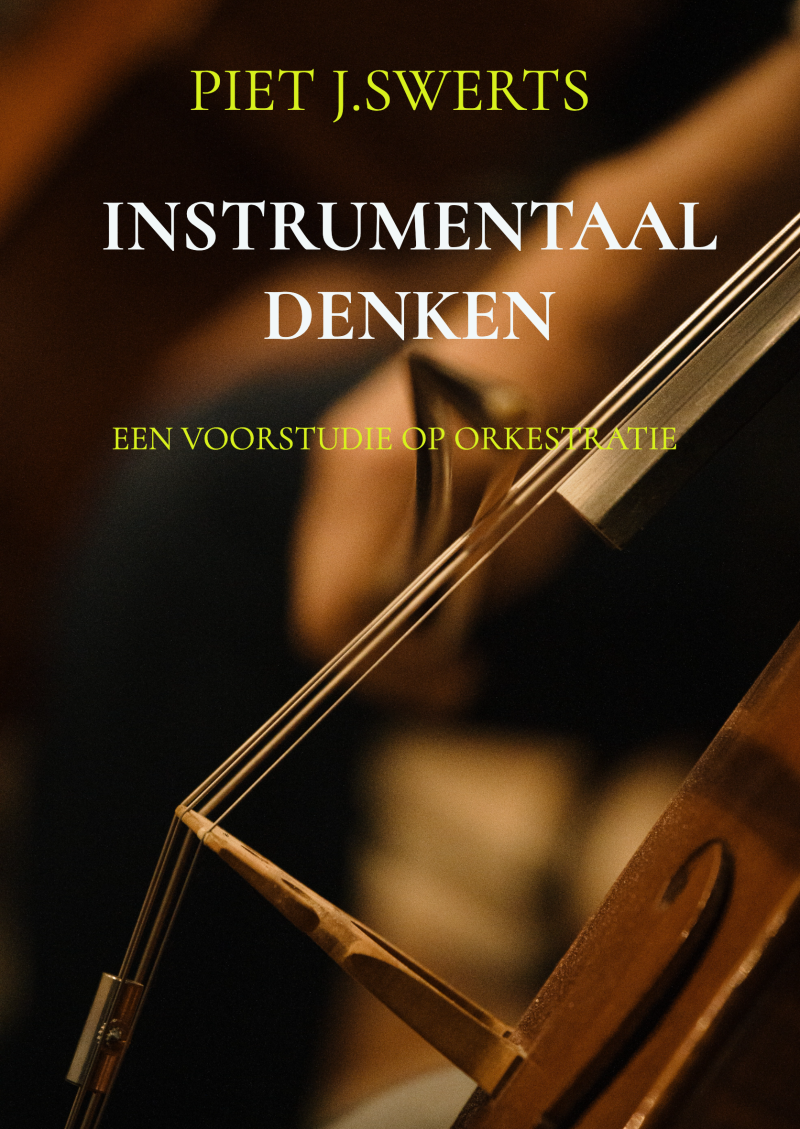
DUTCH VERSION — Dit boek is een uitgebreide casestudy waarin stapsgewijs wordt toegelicht hoe je eenvoudig muzikaal materiaal kan transformeren tot instrumentale muziek in alle mogelijke combinaties. Aanbevolen voor professionele musici en fervente muziekliefhebbers.
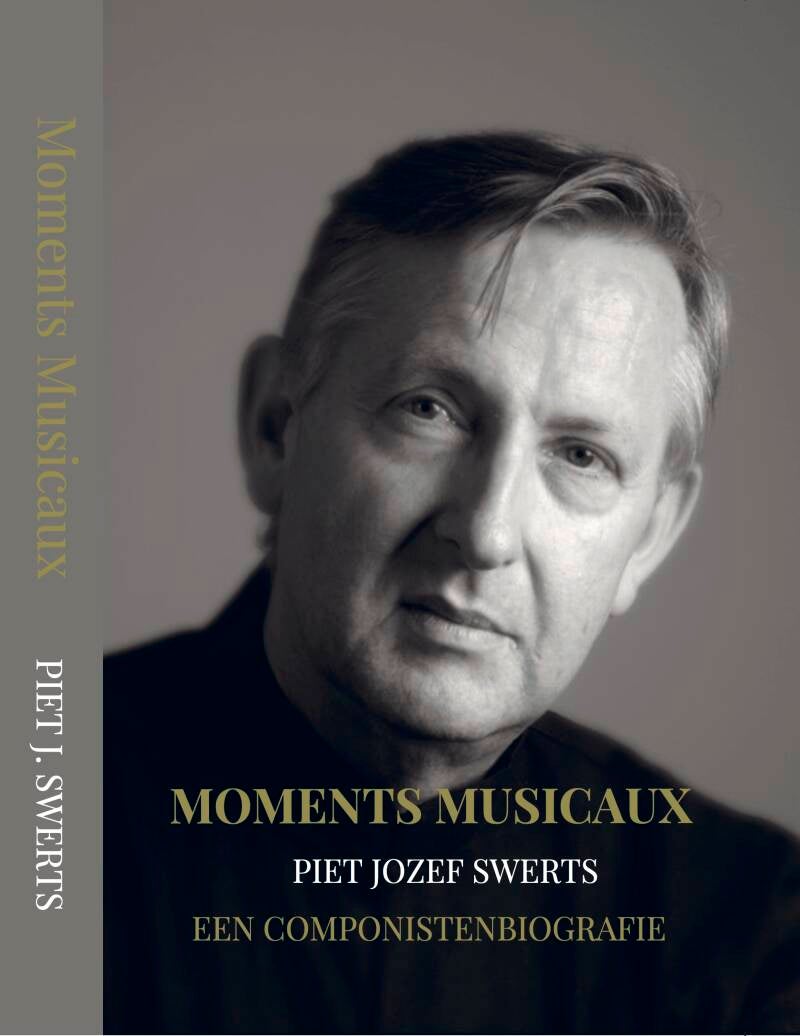
Voor veel mensen is muziek componeren een mysterie. De biografie van Piet Jozef Swerts geeft een kijk in de interne keuken van een componist samen met QR-codes waarmee je zijn muziek kan beluisteren en bekijken.
Synopsis
Veel mensen zijn geïntrigeerd door hoe muziek geschreven wordt. Voor hen is componeren een fascinerend ambacht. Het lijkt haast een ongrijpbaar mysterie. Maar juist dit boek biedt een bijzondere blik in de interne keuken van een professionele componist en tracht genuanceerd antwoord te geven op de vraag die velen bezighoudt: "Hoe doe je dat eigenlijk, componeren?" "Moments musicaux" is een genereuze terugblik op meer dan veertig jaar van mijn carrière. In dit boek beschrijf ik die muzikale reis zo precies mogelijk. Het is een buitengewone muzikale zoektocht geworden met soms ontroerende en verrassende gebeurtenissen. Het vertrekt vanuit een chronologische verhaallijn met relevante beschrijvingen van de creatieprocessen van mijn composities. Meer dan 120 QR-codes zijn ermee geïncorporeerd en verbonden aan audio- en video-opnames van de besproken werken, zodat je je tussen de verhalen door in je eigen tempo in deze muziek kan inleven. Zo bekom je niet alleen een beter beeld van hoe muziek schrijven in zijn werk gaat, maar word je vooral deelachtig aan mijn muzikale wereld.
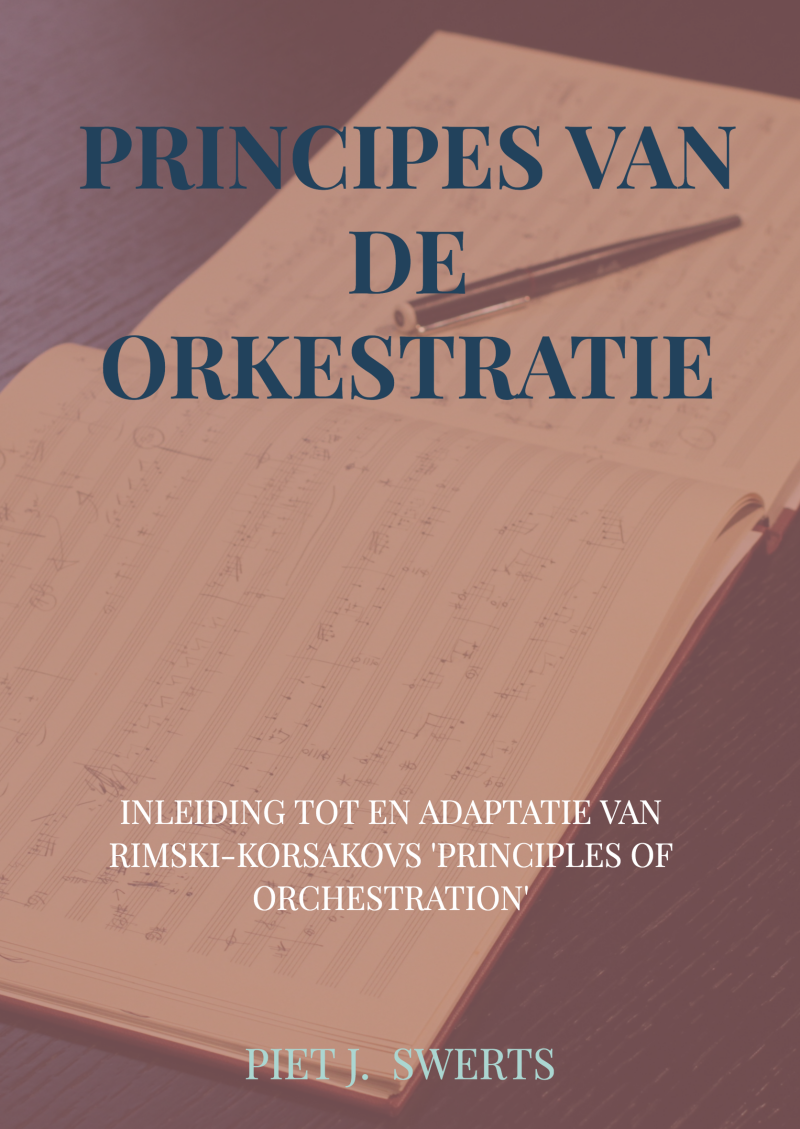
Inleiding tot en adaptatie van Rimski-Korsakovs 'Principles of Orchestration'
'Principes van de Orkestratie' is de allereerste Nederlandstalige uitgave en adaptatie van Rimski-Korsakovs 'Principles of Orchestration' met bovendien 46 orkestraties uitgelegd aan de hand van een fragment uit een pianosonate van W.A. Mozart
Synopsis
'Principes van de Orkestratie' is de allereerste Nederlandstalige uitgave en adaptatie van Rimski-Korsakovs 'Principles of Orchestration'. Het bevat bovendien eerst een uitgebreide Inleiding tot de Orkestratie met daarin meer dan 40 nieuw uitgewerkte orkestratie-voorbeelden uitvoerig beschreven aan de hand van steeds hetzelfde fragment uit een pianosonate van W.A. Mozart. De auteur, dr. Piet J. Swerts is Senior Researcher en docent compositie en orkestratie aan het LUCA School of Arts. Als componist werkt hij sinds 1985 in opdracht. In 1993 kreeg zijn vioolconcerto 'Zodiac' de Grote Internationale Prijs Koningin Elisabeth voor Compositie. In 2013 werd hij benoemd als lid van de Koninklijke Vlaamse Academie in de Kunsten. Meer info: www.pietswerts.be
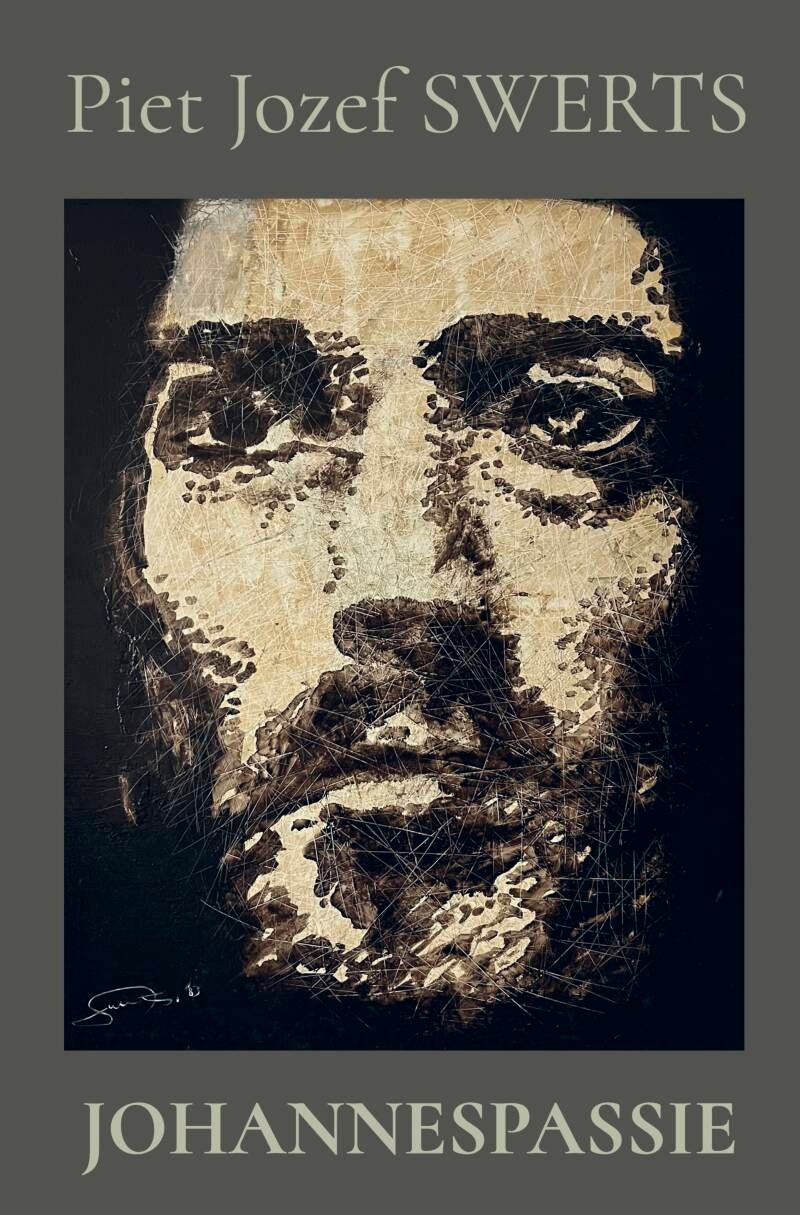
Deze uitgave bevat de klavierreductie van de Johannespassie van Piet Jozef Swerts. Het werk heeft een totale duur van ongeveer twee uur en is opgezet in twee delen. Bezetting: drie solisten, gemengd koor, houtblazerskwintet, continuo en strijkers. De compositie telt 42 afzonderlijke nummers, waaronder recitatieven, turbakoren, koralen en aria’s. De evangelieteksten worden daarin afgewisseld met bezinningsteksten die geïnspireerd zijn op bijbelteksten en psalmen, waardoor het passieverhaal zowel narratief als meditatief wordt belicht. De klavierreductie is bedoeld als praktisch studiemateriaal voor solisten, koorzangers en dirigenten. Ze geeft een overzichtelijke weergave van de volledige partituur en vormt een hulpmiddel bij de voorbereiding van repetities en uitvoeringen. Met dit werk voegt Piet Jozef Swerts een omvangrijke en eigentijdse toonzetting van het Johannesevangelie toe aan het hedendaagse passierepertoire.
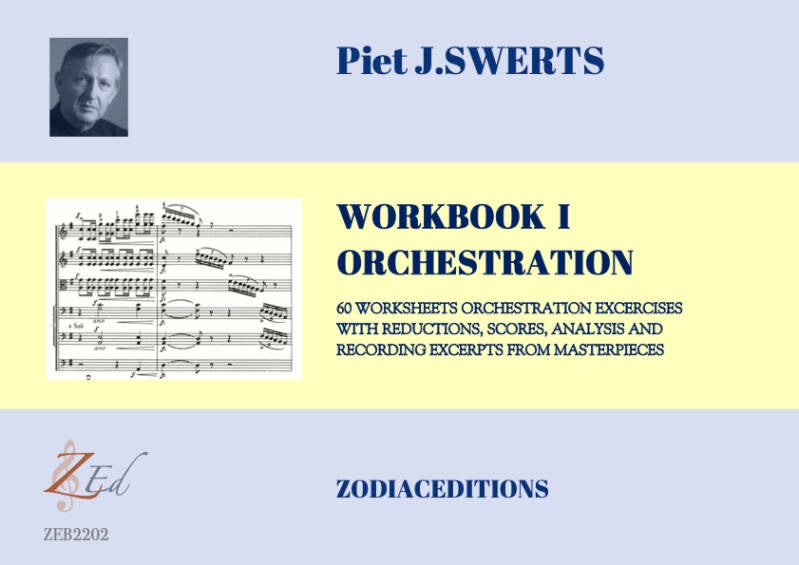
CONTENTS
Curriculum Vitae
INTRODUCTION
Foreword
SVENDSEN, Johan S. — Two Islandic Melodies — worksheet
SVENDSEN, Johan S. — Two Islandic Melodies — pianoreduction
SVENDSEN, Johan S. — Two Islandic Melodies — score
SVENDSEN, Johan S. — Two Islandic Melodies — analysis and assignment
CHAPTER 1 — TEXTURES WITH ONE ELEMENT [Melody]
01 BEETHOVEN, Symphony N°3, op.55 — Eroica — part 1 — m.45-47
02 BEETHOVEN, Symphony N°1, op.21 — part 1 — m.144-160
03 TCHAIKOVSKY, Symphony N°4 — part 2 — m.1-20
04 DEBUSSY, Claude, Prélude à l’après-midi d’une faune — m.1-4
05 STRAVINSKY, Igor, Le Sacre du Printemps — m.1-3
06 BARTÓK, Béla, Concerto voor Orkest — I. Introduzione
07 GRIEG, Edvard, Aus Holberg's Zeit, op.40 — I. Praelude — m.19-20
08 GRIEG, Edvard, Aus Holberg's Zeit, op.40 — I. Praelude — m.41
09 HOLST, Gustav, St.Paul’s Suite — II. Ostinato — last 4 bars
10 HOLST, Gustav, St.Paul’s Suite — I. Jig, Vivace — opening
11 BIZET, George,L’Arlésienne, Suite N°1 — Ouverture — Allegro deciso
12 MOZART, Symphony N°40, K.V.550 — Allegro assai — m.125-133
13 BEETHOVEN, Symphony N°5, op.67 — Allegro con brio — opening
14 BEETHOVEN, Symphony N°6, op.68 — Presto — m.234-243
15 d'INDY, Vincent, star, Variations Symphoniques — pp.40-43
16 SAINT-SAËNS, Camille, Dance macabre, op.40 — pp.23-24 E
ANALYTICAL COMMENTS
CHAPTER 2 — TEXTURES WITH TWO ELEMENTS
[Melody and Accompagnement]
17 BEETHOVEN, Symphony N°1, op.21 — Allegro con brio, m.52-64
18 BEETHOVEN, Symphony N°1, op.21 — Allegro con brio, m.205-217
19 SAINT-SAËNS, Dance macabre, op.40 — pp.9-10
20 SAINT-SAËNS, Dance macabre, op.40 — pp.3-4
21 TCHAIKOVSKY, Dance Chinoise
22 SATIE, Gymnopédie N°2 — orch. Claude Debussy
23 RAVEL, Les entretiens de la Belle et de la Bête, m.1-8
24 RAVEL, Les entretiens de la Belle et de la Bête — p.36
25 DE FALLA, El Sombrero de Tres Picos — Afternoon p.3
26 HOLST, The Planets — Part III — Mercury, The Winged Messenger
27 BARTÓK, Concerto for Orchestra — I. Introduzione
28 BARTÓK, Concerto for Orchestra — IV. Intermezzo interotto
ANALYTICAL COMMENTS
CHAPTER 3 — TEXTURES WITH THREE ELEMENTS
[Melody, Accompagnement and Secondary Melody]
29 BEETHOVEN, Symphony N°7, op.92 — Allegretto — m.75-84
30 BRAHMS, Symphony N°3, op.90 — Poco Allegretto
31 TCHAIKOVSKY, Symphony N°4 — part 2 — m.75-82
32 TCHAIKOVSKY, Symphony N°6 — part 2 — letter K
33 DVORAK, Slavonic Dances, op.46 N°7 — Allegro assai — m.136-139
34 DVORAK, Slavonic Dances, op.46 N°8 — Presto — m.9-16
35 SAINT-SAËNS, Dance Macabre, op.40 — Mouvement modéré de Valse
ANALYTICAL COMMENTS
CHAPTER 4 — HARMONIC TEXTURES
36 MOZART, Die Zauberflöte, K.V. 620 — Ouverture — m.1-3
37 MENDELSSOHN, Ein Sommernachtstraum, op.21 — Ouverture — m.1-7
38 BEETHOVEN, Symphony N°5, op.67 — Allegro con brio — m.196-222
39 BEETHOVEN, Symphony N°6, op.68 — Allegro ma non troppo — m.422-426
40 BEETHOVEN, Symphony N°6, op.68 — IV. Gewitter, Sturm — m.29-36
41 GRIEG, Aus Holberg’s Zeit, op.40 — IV. Air, Letter R — m.5-6
42 DVORAK, Symphony N°9 — Largo — m.1-4
43 HOLST, St. Paul’s Suite, op.29 N°2 — I.Jig — Vivace — m.9-12
44 HOLST, St. Paul’s Suite, op.29 N°2 — I.Jig — Vivace — Slotakkoord
45 MOESSORGSKI, Pictures of an exhibition — orch. M.Ravel
46 MOESSORGSKI, Pictures of an exhibition — Vivo leggiero
47 MOESSORGSKI, Pictures of an exhibition — La Grande Porte de Kiev
48 BARTÓK, Concerto for Orchestra — Giuoco delle coppie — m.123-156
49 STRAVINSKY, Le Sacre du Printemps — Les Augures Printaniers
ANALYTICAL COMMENTS
CHAPTER 5 — CONTRAPUNTAL TEXTURES
50 MOZART, Don Giovanni — Ouverture — m.129-139
51 MOZART, Symphony N°40, K.V. 550 — Menuet — m.28-36
52 BEETHOVEN, Symphony N°9, op.125 — Scherzo, Presto — m.438-454
53 BEETHOVEN, Symphony N°9, op.125 — Finale — m.116-131
54 GRIEG, Edvard — Aus Holzberg’s Zeit, op.40 — V. Rigaudon — m.9-14
55 DVORAK, Slavonic Dances, op.46 N°7 — m.1-19
56 SAINT-SAËNS, Dance macabre, op.40 — Repetitie Letter G
57 TCHAIKOVSKY, Symphony N°6 ‘Pathétique’ — Adagio lamentoso
58 TCHAIKOVSKY, Symphony N°5 — Allegro moderato — m.104-110
59 STRAVINSKY, Le Sacre du Printemps — Les Augures Pritaniers
60 RAVEL, Pavane de le Belle au bois dormant — Lent — Rep.N°14
ANALYTICAL COMMENTS
Afterword
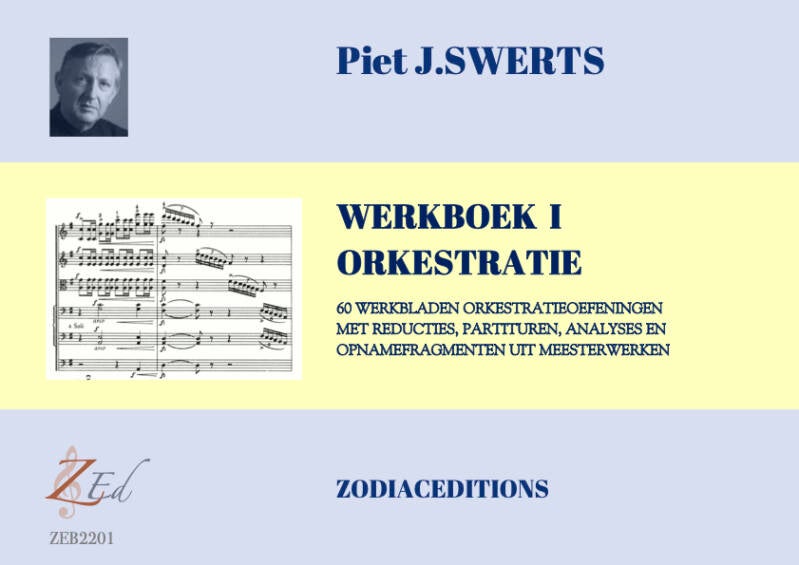
NEDERLANDSE VERSIE —BESTEL HIER

